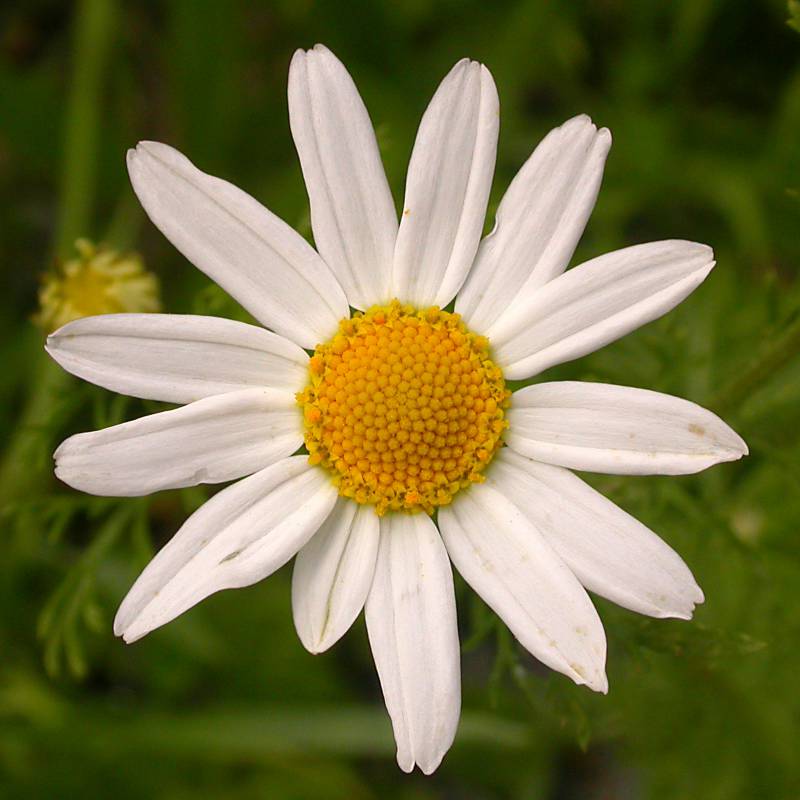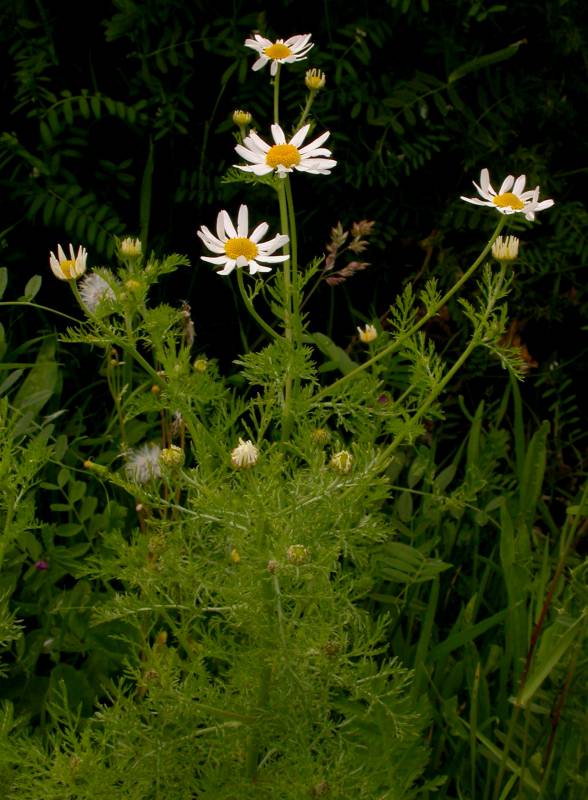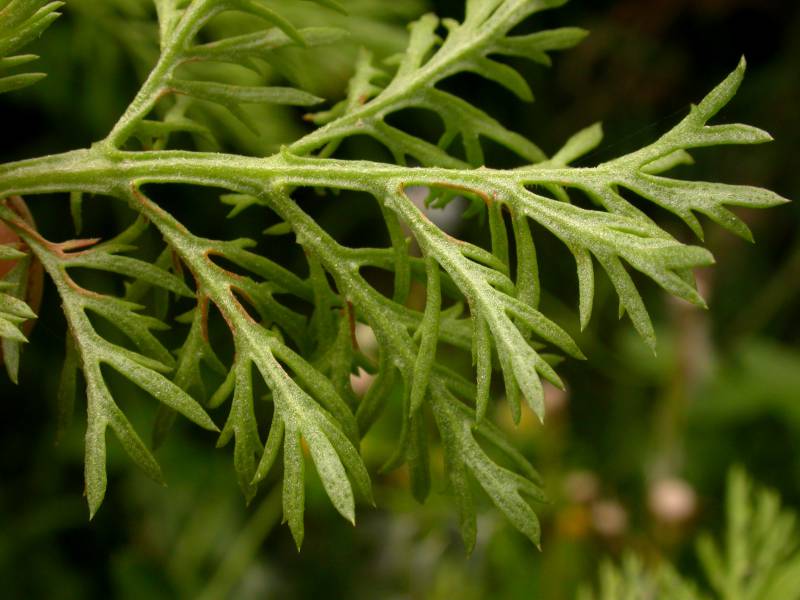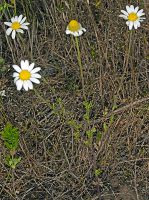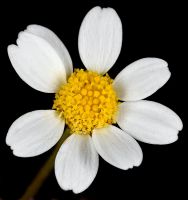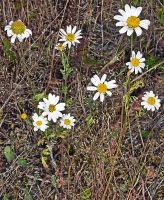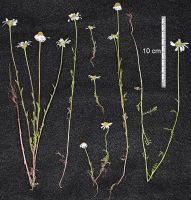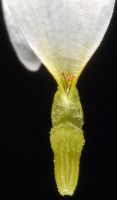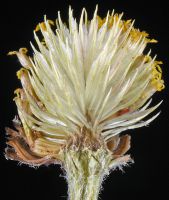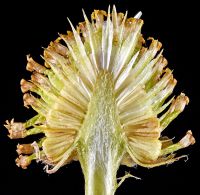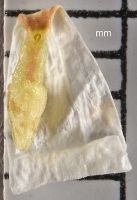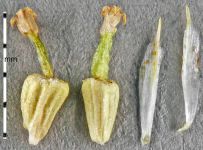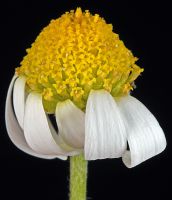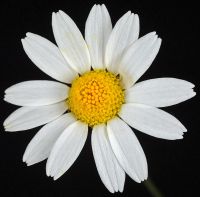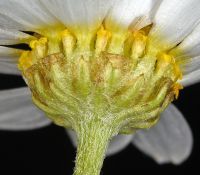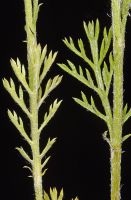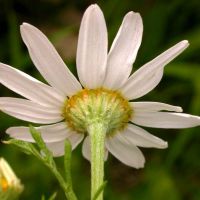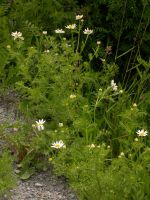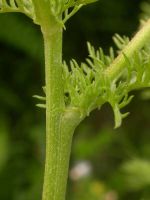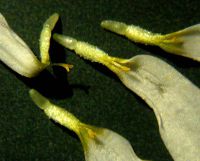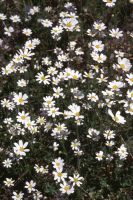Distribution: Occurring chiefly west of the Cascades crest in Washington; British Columbia to California, east to the northern Great Plains in the U.S, widespread from the midwestern U.S. to eastern North America.
Habitat: Roadsides, fields, wastelots, and other disturbed open areas generally at low elevations.
Flowers: June-August
Origin: Introduced from Europe
Growth Duration: Annual
Conservation Status: Not of concern
Pollination: Beetles, flies
Ill-smelling, glabrous, branched annual, 1-6 dm. tall.
Leaves 2-6 cm. long, 2 or 3 times pinnatifid, with narrow segments.
Heads fairly numerous, short-pedunculate at the ends of the branches, the disk 6-11 mm. wide, becoming ovoid at maturity; involucre with a few soft hairs, the bracts imbricate, soft and thin, with a hard, sharp awn tip; rays 10-20, white, pistillate and fertile; disk flowers perfect and yellow; receptacle chaffy throughout; pappus none.
Achenes sub-terete, 10-ribbed, without glandular bumps.
Publication: Sp. Pl. 2: 894. 1753.
PNW Herbaria: Specimen records of Anthemis arvensis in the Consortium of Pacific Northwest Herbaria database
WA Flora Checklist: Anthemis arvensis checklist entry
OregonFlora: Anthemis arvensis information
E-Flora BC: Anthemis arvensis atlas page
CalPhotos: Anthemis arvensis photos

